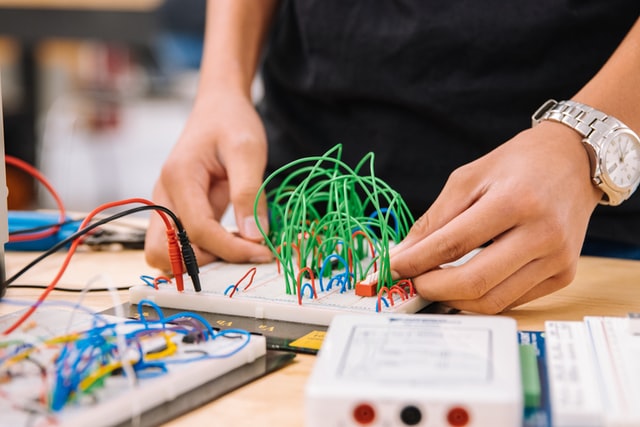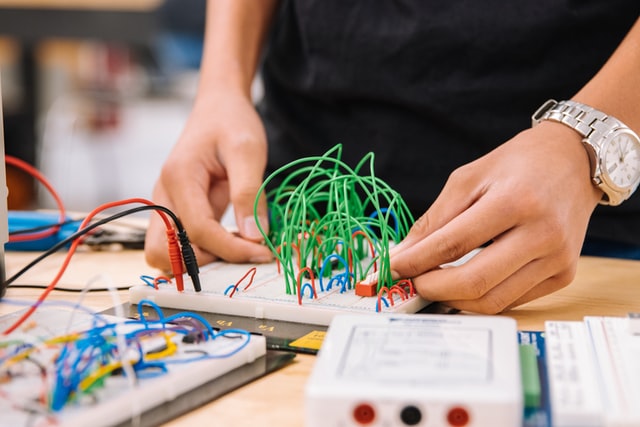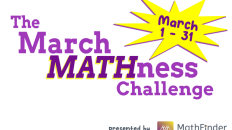

The COVID pandemic forced our children home from school in March, leaving parents and teachers scrambling. Many parents had to adjust to teaching their kids at home while working from home at the same time, and schools were unprepared for virtual learning.
Now, with a COVID spike in many parts of the country, numerous schools have decided to continue virtual learning into the new year. While this is deemed necessary, the risk of a severe COVID academic slip is very real, and this is happening in math more than in reading and English. Students may lose 50% of last year’s academic gains in math. Why? Many parents feel uncomfortable teaching math to their children. Parents often look at math as being in the “school’s domain,” and learning math just doesn’t happen at home.
Learning STEM subjects is hard enough for kids when they’re in front of teachers. These are subjects that students usually either excel in or struggle; there is rarely middle ground. Remove students from face-to-face learning — in this case, thanks to COVID — and the struggle is doubled. Add in parents who struggle with these subjects as well, and everyone is going to become frustrated with them.
Therefore, it’s important to help students and parents alike by offering them supplemental learning materials for STE(Art)M subjects. There are methods to teach math and other STEM subjects from home, however, in ways that supplement a child’s online instruction. The activities, books, and apps below are free or inexpensive ways to enhance any child’s STEM learning at home.
Learning and Creating with STEM Activities
With a little help and a few materials, children can do many STEM-related activities :
- Sprouting Seeds. This is an activity that kids will enjoy with the help of a few books on plants and a video showing time-lapsed photography of germinating seeds.
- Dissecting old technology such as a computer mouse, floppy disk, or cassette tape. There are online “teardown” videos to help with the process, and you can also teach how the device was used at the same time.
- Using a potato to light an LED light. This will fit in well with children’s natural curiosity with electricity.
- Cooking at home. Recipes are filled with science and math. Along with the cooking, you can show a video about the science of cooking that explains how different ingredients interact together to make perfect, delicious food.
NASA is also providing ways for students to learn STEM from home, from building models to launching homemade rockets, all using very simple, attainable materials. NASA also provides activity pages, puzzles, and coloring sheets that can be printed and used at home.
Additionally, you can take part in TalkSTEM’s free 21-day STEAM challenge filled with activities that are sent straight to your inbox. These activities allow for creative, imaginative thinking that can be modified to fit both elementary and middle school-level children and have supplemental links to additional resources.
And if children are getting cabin fever from all of the extra time spent indoors, nature fits into these lessons perfectly. You can take your children on STEM walks. During such walks, children notice certain elements in their environment and question how things work or are composed. From there, they formulate questions without being concerned about how they are associated with science or math and determine ways to find the answers to their questions.
STEM Books for Children
In addition to hands-on activities, many books are designed to ignite children’s interest in and help them learn STEM-related subjects.
If your child has shown an interest in coding, A Day in Code is the perfect book for them. Before now, beginning coding books were designed like textbooks and were boring and unrelatable to children. A Day in Code is a children’s picture book that teaches code via a story of two kids having fun. By doing this, the code has meaning and represents real-life situations. This is a great beginning-coding book for all ages.
A Day in Code is only one of many books written with STEM in mind. Here are some others to check out:
- The Most Magnificent Thing by Ashley Spires. Shows children that they have to work hard to invent something new and that success is never guaranteed.
- Super Cool Tech by DK. Presents some of the neatest inventions of all-time.
- Countdown: 2979 Days to the Moon. Tells the story of the historic push to send people to the moon.
- From Here to There by HP Newquist. Helps children understand how transportation has evolved over time.
- Whoosh! By Chris Barton. Recounts the dedication and problem-solving skills of Lonnie Johnson, the inventor of the super soaker.
Virtual Learning
Hand-on activities and books are great resources, but you can’t talk about STEM without bringing in technology. There are many high-tech, traditional STEM summer camps to consider once COVID-19 is over, but we need to think about what is available online now. Luckily, several organizations have stepped up to the plate, and there are numerous online resources for children:
- San Diego Zoo Kids. Children learn about the zoo through crafts and games and look in on some of the animals through the zoo’s webcams.
- The Spangler Effect. Shows science demonstrations and do-it-yourself experiments.
- Imagineering in a Box. Examines how Disney Imagineers create theme parks and allows children to design their own worlds.
- Blockly Games: Code with Google. Children play games that teach them coding basics.
- ABCYa!Math: Allows children through 6th grade to play educational math games.
These resources are accessible online for students of all ages, and while they are not as interactive as a camp, they are available at any time and can go a long way to supplementing a child’s STEM education while they are not in school.
Keep Your Children Safe
With virtual learning on mobile devices, you need to ensure that your children are safe. There are a few basic rules to follow to ensure that your child has a safe, online experience:
- Clean your devices. To defend against malware and other online threats, make sure that your devices have the latest versions of apps as well as an up-to-date operating system and the most recent security software and web browsers.
- Be careful when utilizing Wi-Fi hotspots. Turn off Wi-Fi when not in use in addition to features that allow you to automatically connect to Wi-Fi. Also look for “https://:” at the beginning of websites to ensure a secure connection.
- Secure your personal information. Make sure your children know not to share personal information including real name, address, age, and phone number.
Using these tips will allow your children to have a safe and secure online experience.
STEM-related Toys
In addition to online resources that help your children with STEM learning, there are robot toys that assist in teaching critical thinking and problem-solving skills as well as concrete concepts in robotics, coding, and building:
- Robot Engineer. Allows preschool children to build simple toy robots that work.
- Robo Wunderland Robot Toy. Lets children use their existing Lego blocks to build functional robots.
- Miko2: Playful Learning STEM Robot. A small robot designed to recognize kids and to sing, talk, and tell stories to them.
- Sphero RVR: All-Terrain Programmable Coding Robot. A rover that learns at the same pace a child learns. It starts by following simple commands, but later can be coded with JavaScript.
There’s no doubt about it: COVID-19 has interrupted our daily lives and our children are being forced to learn at home, but not all is lost. There are many ways including hands-on activities, books, online instruction, and fancy gadgets and robots that can ignite the curiosity of children as well as directly teach them STEM concepts. With a little help from us, children will stay creative and learn during this crucial time in their lives.
About Indiana Lee


Indiana Lee is a writer and journalist from the Pacific Northwest with a passion for covering workplace issues, social justice, environmental conservation, and more. You can follow her work on Contently (https://indianaleewrites.contently.com/), or on twitter @indianalee3








Add comment